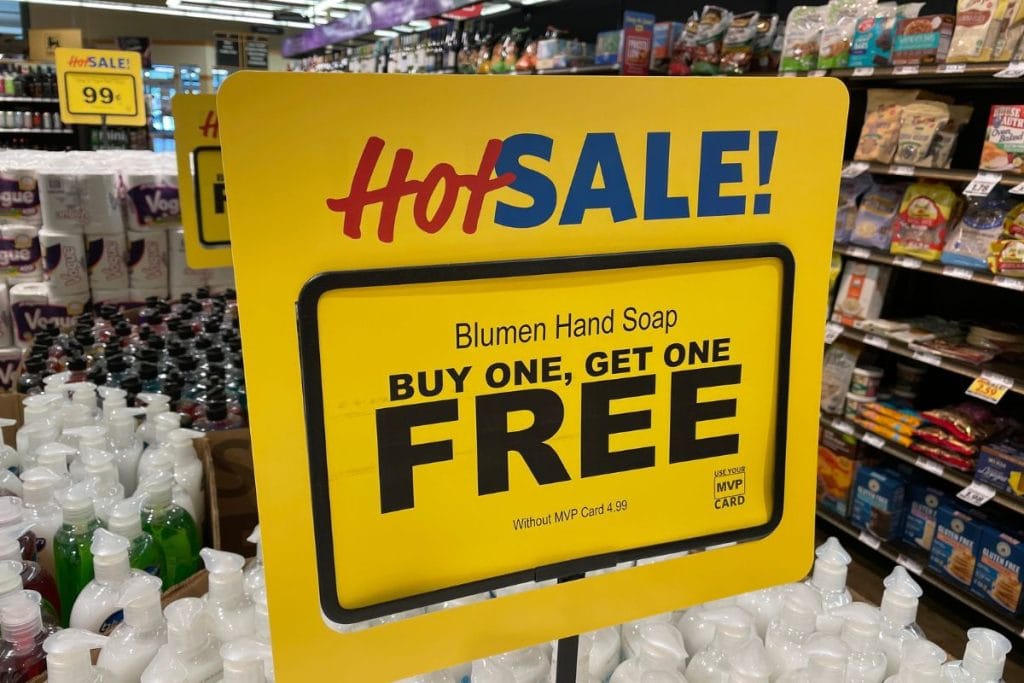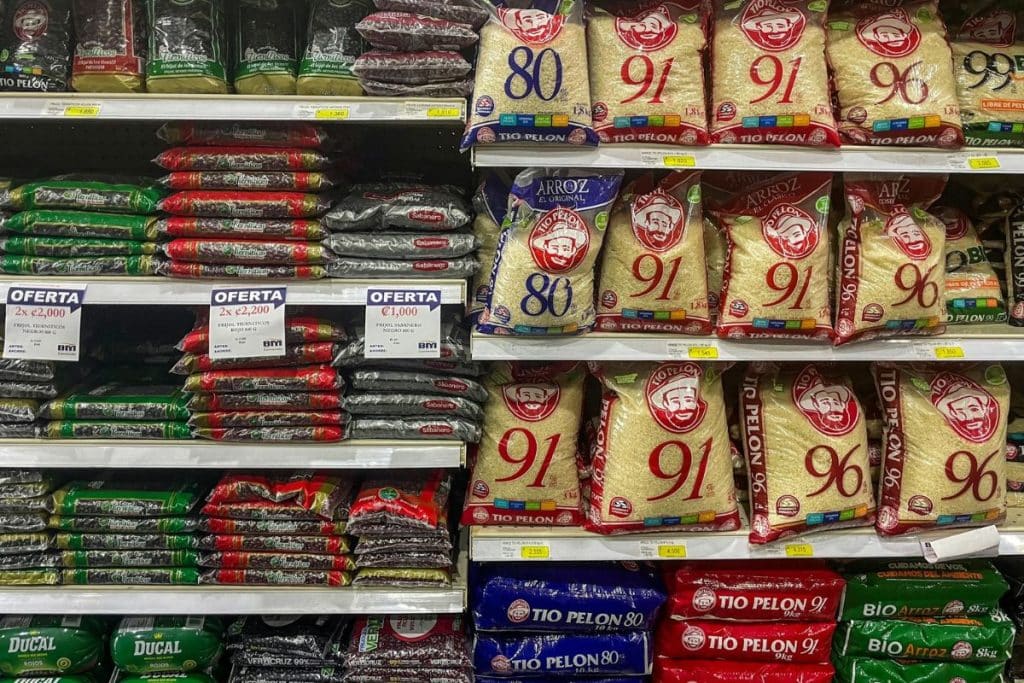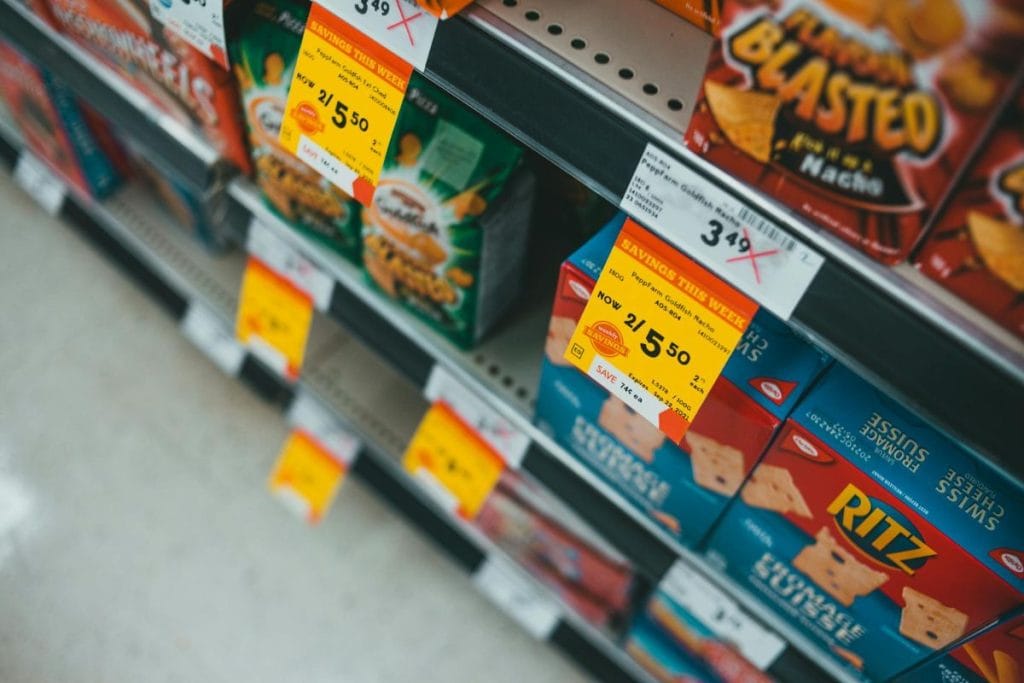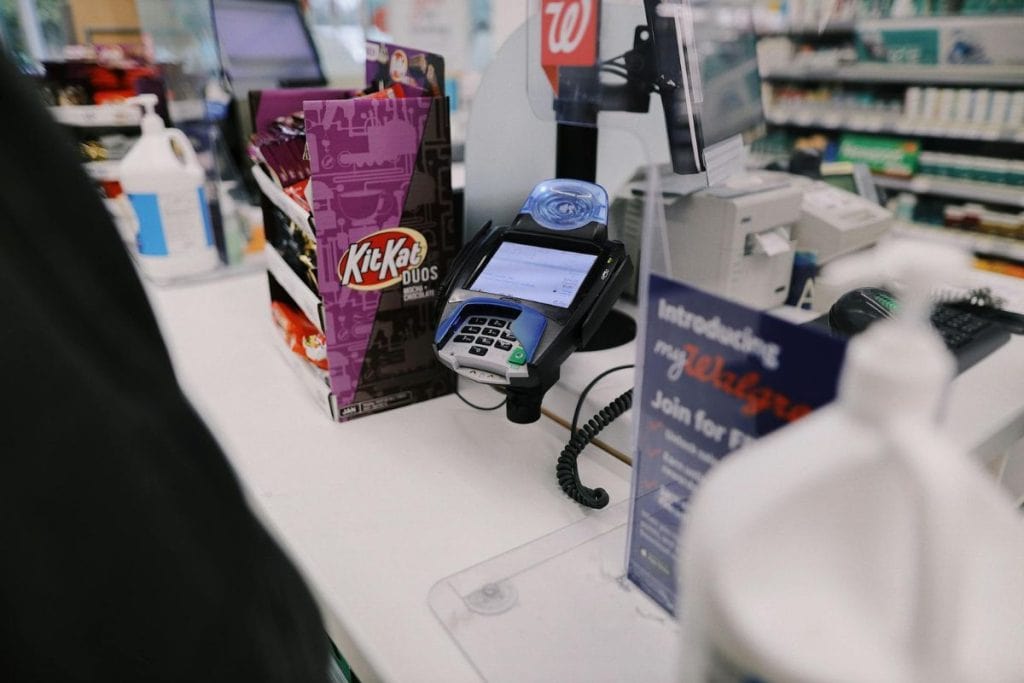This post may contain affiliate links which means I will get a commission if you make a purchase at no additional cost to you. As an Amazon Associate I earn from qualifying purchases. Please read my disclosure for details.
Ever walked into a grocery store for just a few essentials, only to leave with a cart full of things you didn’t plan to buy? It’s not your lack of willpower—it’s by design!
Grocery stores use clever psychological tricks to influence your spending and keep you in the aisles longer. From deceptive discounts to strategic product placements, these sneaky tactics are meant to mislead you.
In this post, we’ll expose 13 of the worst grocery store tricks so you can shop smarter and avoid falling for their schemes.
1. Eye-Level Product Placement

WANT TO SAVE THIS RECIPE?
Grocery stores place the most expensive items at eye level, knowing that shoppers are more likely to grab what’s right in front of them. This tactic targets convenience over cost-effectiveness. To save money, always scan the top and bottom shelves where the budget-friendly options usually reside.
Related Post: 25 On the Go Desserts for Sweet Moments Anywhere
2. Misleading “Sale” Signs

Bright sale signs with bold fonts are designed to catch your attention, but not every sale is a real deal. Sometimes, the price reduction is minimal or non-existent. Always compare the sale price to the regular price on the shelf tag to see if you’re truly saving.
Related Post: The 15 Worst Snacks Consumers Are Still Buying
3. Bulk Buying Pressure

Stores promote bulk deals like “buy one, get one free” or discounts for buying in large quantities, assuming it saves you money. However, if you don’t need the extra items, it can lead to waste. Always consider whether you’ll actually use the additional products before stocking up.
Related Post: 25 Meal Prep Lunch Ideas That’ll Make Your Co-Workers Jealous
4. Deceptive Packaging Sizes

Manufacturers often use packaging that looks larger than it is, tricking you into thinking you’re getting more for your money. Pay attention to the net weight instead of relying on package size, and compare unit prices to find the best deal.
Related Post: 25 Soup or Stew Recipes That’ll Save You Time and Effort
5. Strategic Store Layouts

Essential items like milk and bread are placed at the back of the store, forcing you to walk past tempting, non-essential products. This increases the chances of impulse purchases. Stick to your shopping list and head straight for what you need to avoid unnecessary spending.
Sign up now to receive our exclusive e-cookbook filled with top-rated recipes for FREE!
6. Overuse of “Healthy” Buzzwords

Words like “natural,” “organic,” and “gluten-free” can make products seem healthier than they are, even if they’re high in sugar, fat, or sodium. Always read the ingredient list and nutrition facts to understand what you’re really buying.
Related Post: 15 Genius Ways to Add More Protein to Meals Without Breaking the Bank
7. False Sense of Urgency

Limited-time offers and phrases like “only a few left” create a sense of urgency, pressuring you to buy without thinking. Don’t fall for the hype—take a moment to assess if the deal is genuinely worthwhile.
Related Post: 25 Healthy Quick Dinner Recipes That Will Ruin Your Favorite Takeout
8. Free Samples Leading to Impulse Buys

Free samples aren’t just generous gestures—they’re marketing tools designed to encourage impulse purchases. Sampling something tasty can make you feel obligated to buy it, even if it wasn’t on your list. Enjoy the sample, but don’t feel pressured to purchase.
Related Post: 25 Soul Food Entrees That Will Feed Your Heart and Soul
9. Confusing Unit Pricing

Stores sometimes display unit prices in inconsistent formats, making it hard to compare products. Check if the unit price is per ounce, pound, or item, and do a quick calculation if needed to ensure you’re getting the best value.
Related Post: 12 Budget-Friendly Recipes That Stretch Your Grocery Dollar
10. Checkout Lane Temptations

Gum, candy, and small gadgets near the checkout are there for a reason—they’re impulse buys targeting bored shoppers waiting in line. Stay focused and resist the temptation to add unnecessary items to your cart at the last minute.
Sign up now to receive our exclusive e-cookbook filled with top-rated recipes for FREE!
11. Loyalty Program Pitfalls

While loyalty programs can offer savings, they also encourage you to spend more to unlock rewards. Sometimes, the discounts aren’t significant, and you may end up buying items you don’t need just to reach a points threshold.
Related Post: 25 Black People Meal Ideas That Will Redefine Comfort Food
12. Pre-Cut Produce Markups

Pre-cut fruits and vegetables are convenient but come with a hefty price markup. You’re paying extra for the labor, not necessarily for better quality. Buy whole produce and cut it yourself to save money.
Related Post: 25 Black People Food Ideas That Celebrate Tradition and Flavor
13. Manipulative Music and Lighting

Stores use soft lighting and slow, calming music to create a relaxed shopping environment, encouraging you to spend more time (and money) browsing. Be aware of this subtle influence and stick to your list to avoid unnecessary purchases.
Related Post: 12 One-Pot Meals Perfect for Busy Retirees
Final Thoughts

Grocery stores are designed to encourage you to spend more, often using clever psychological tricks.
By staying informed and mindful of these tactics, you can shop smarter, stick to your budget, and make healthier choices. Remember, the best defense against these strategies is a well-planned list and a keen eye for detail.
Sign up now to receive our exclusive e-cookbook filled with top-rated recipes for FREE!
Disclaimer: This list is solely the author’s opinion based on research and publicly available information.
12 Budget-Friendly Recipes That Stretch Your Grocery Dollar

When it comes to saving money without sacrificing flavor, the key is finding recipes that maximize simple, affordable ingredients. Packed with bold flavors and clever cooking techniques, each dish stretches your dollar while satisfying your taste buds.
Read it here: 12 Budget-Friendly Recipes That Stretch Your Grocery Dollar
12 One-Pot Meals Perfect for Busy Retirees

Retirement brings the joy of time and freedom, but it also brings the challenge of keeping meals easy, delicious, and not too time-consuming. Whether you’re cooking for yourself or sharing meals with family, these 12 one-pot meals will help keep the kitchen stress-free without compromising on flavor.
Read it here: 12 One-Pot Meals Perfect for Busy Retirees
Is Walmart+ Still Worth It in 2025? The Truth After 3 Years

Could you be missing out on major savings and life-changing convenience? After three years with Walmart+, I’m sharing the honest truth about what’s worth it—and what’s not. Don’t sign up (or skip out!) without reading this first!
Read it here: Is Walmart+ Worth It? Honest Review 3 Years Later!
You’ll love these related posts:
- 25 Cheap Family Dinners So Filling, Everyone Will Leave the Table Happy
- 30+ Charcuterie Board Ideas That Prove You’ve Been Doing It All Wrong!
- The 15 Worst Snacks Consumers Are Still Buying
- 15 Genius Ways to Add More Protein to Meals Without Breaking the Bank
- 12 Budget-Friendly Recipes That Stretch Your Grocery Dollar
